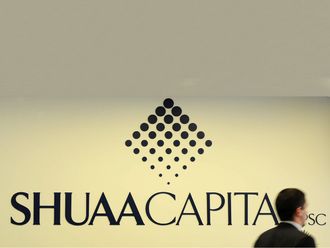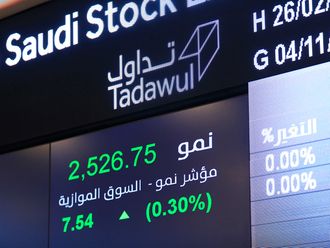Even as foreign capital outflows hobble Indian shares more fund managers believe the worst is behind them as corporate earnings offer hope for better bottom-lines in the coming quarters. While pharmaceutical companies are riding strong demand for generic products, sectors that benefit from greater discretionary consumer spending are seen as good buys.
Fund managers also say that state-run lenders, which have been pummelled by investors because of their sticky loan portfolios, are ripe for a rebound on the back of government moves to take the bad debts off their books and an expected rise in demand for loans. The drop in stock values has made the market attractive to domestic investors who have been sitting on cash.
Lupin Ltd, the world’s tenth-largest generic drugmaker by revenue, on Friday leapt 9.1 per cent — the most in six years — after its December quarter earnings beat street expectations and sales are expected to get a big boost from recent US approvals for a generic version for type 2 diabetes drug Glumetza.
The company is entitled to six months exclusivity on the market for the drug, which was developed by Canada’s Valeant Pharmaceutical International Inc and clocked sales of $450 million in the year to September 2015. Lupin CEO Vinita Gupta reckons the No. 3 Indian drugmaker will corner “the lion’s share” of Glumetza market.
Shares in Sun Pharmaceutical Industries, the leading Indian maker of medicines, and Cipla Ltd, which made a name internationally with its generic version for fighting AIDS epidemic, were among the main gainers among the top-30 Sensex on Friday.
In its expanded 18 Asian stocks to watch in 2016, Citigroup had three Indian companies — energy conglomerate Reliance Industries Ltd, private-sector lender Axis Bank and drugmaker Aurobindo Pharma.
“The US biz momentum continues to surprise and the strong pipeline indicates that the momentum should sustain over the medium term,” the global investment bank said in a note on Aurobindo. “Strong revenue growth and consequently rising capacity utilisation along with an improving product mix would drive strong earnings growth.”
State-run banks
Burdened under bad loans shares in state-controlled banks have tumbled for months. State Bank of India, the country’s biggest commercial lender, has seen its market value plummet 45.7 per cent since January 2015. The combined market value of 12 state-run banks in the NSE Nifty PSU Bank Index has tumbled to $33 billion — below private-sector leader HDFC Bank’s $39 billion.
The sell-off has made government-managed banks attractive for investors, especially with plans afoot to pump in fresh capital and find a way to address the soured loans portfolio.
“If I take a three-year view, I would be very bullish on the public sector banks,” S. Naganath, chief investment officer at DSP BlackRock Investment Managers, told Bloomberg. “The non-performing assets issue has been debated and analysed for quite some time now, and all the worries around it are in the stock prices.”
State Bank of India and smaller rival Bank of Baroda, whose shares have lost 34.4 per cent in just over a year, are scheduled to release their December quarter results next week.
“There may still be some more provisioning to be done, which may impact the earnings of banks in this quarter,” said Naganath, who oversees $5.8 billion in assets. “The stock prices reflect those concerns for private and public-sector banks, especially the latter.”
Global woes
Overseas portfolio investors have withdrawn $1.7 billion from stocks since the start of January — after their lowest net inflow in four years of $3.3 billion in 2015 — and the outflow has pulled the benchmark market indices down 5.8 per cent over five weeks. The sell-off was caused by global issues such as the plunge in world oil and commodity prices that have squeezed incomes of exporting countries and China’s economic woes resulting in excess capacities.
For India, a big importer of oil and other commodities, the slump in prices have provided succour to government finances as well as caused alarm in some respects. To elaborate, cheaper fuel costs have bolstered current accounts and kept inflation within limits, but distress dumping by China in items like steel are hurting domestic producers.
Tata Steel, the country’s biggest producer of the metal that gets two-thirds of sales from its UK-based Corus unit, reported a sharp quarterly loss of Rs. 21.27 billion compared with a net profit of Rs. 1.57 billion in the same period a year earlier, as cheaper imports from China in Europe and India hurt producers across continents, including the world leader ArcelorMittal which posted an annual loss of $8 billion.
“We are witnessing significant unfairly priced imports into countries like the UK, India and South East Asia, which has disrupted the pricing discipline in most markets,” Koushik Chatterjee, group executive director for finance and corporate, said.
Earlier JSW Steel, the No. 3 steel producer in India, swung into a record quarterly loss as cheap imports dented sales and margins.
To ease the pain, New Delhi on Friday imposed minimum import prices on a variety of steel products that could provide some relief to the industry.
FDIs rising
A concerted move by New Delhi to open up the economy is drawing in more foreign direct investment, helped in no mean measure by the optimistic outlook for growth in the subcontinent.
Foreign direct investments (FDIs) more than doubled to about $4.5 billion in December from $2.16 billion in the same month a year earlier.
“FDI inflow to India recorded a whopping 114 per cent growth for December 2015 vs December 2014,” the Commerce and Industry Ministry said in a tweet. Computer software and hardware, trading, services, automobile and telecommunications were the sectors that attracted the bulk of the investments.
The “Make in India” campaign of Prime Minister Narendra Modi will get a boost in the coming week when he launches targeted schemes in the coming week. The government has relaxed FDI norms in 15 sectors, including defence, single-brand retail, construction, civil aviation and railways to boost investments.
Foreign investment in India is growing at 38 per cent, bucking a decline of 16 per cent globally, Commerce and Industry Minister Nirmala Sitharaman said.
“We will see a lot of policies aimed at promoting growth and getting us to that 7.5 per cent GDP growth rate or better,” DSP BlackRock’s Naganath told ET Now, referring to India’s upcoming annual budget. “In terms of markets, I do expect that there will be some policies which will be aimed at incentivising retail investors to invest more in equities and equity mutual funds.”
The writer is a journalist based in India.












